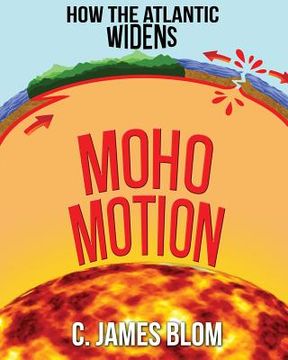Share
Moho Motion: How the Atlantic Widens (in English)
C. James Blom
(Author)
·
Createspace Independent Publishing Platform
· Paperback
Moho Motion: How the Atlantic Widens (in English) - Blom, C. James
$ 7.19
$ 8.99
You save: $ 1.80
Choose the list to add your product or create one New List
✓ Product added successfully to the Wishlist.
Go to My WishlistsIt will be shipped from our warehouse between
Monday, June 24 and
Tuesday, June 25.
You will receive it anywhere in United States between 1 and 3 business days after shipment.
Synopsis "Moho Motion: How the Atlantic Widens (in English)"
These are the musings and sketchings of an old geologist informally proposing new theory of how the Atlantic Ocean gets wider. Laymen: this is pitched to you. Geoscientists: your initial knee-jerk reaction might be "blithering blasphemy". Later these ideas may grow on you. One hundred fifty+ million years ago the Atlantic was a lineup of fresh water lakes, and now it is an ocean 3000 miles wide. Down the middle of the Atlantic a submarine mountain chain overlies miles-thick volcanic rock. Continuing eruptions of volcanic rock below those mountains add an inch a year to the edges of two of the earths plates which meet there. The Moho is a world-wide interface from 5 to 30 miles below the earth's surface. Velocities of sound are slower above and faster below the Moho. Oceanic crust and continental crust float on the Moho. The material below the Moho is usually stable, but if its confining pressure drops, that material locally transitions to lava. This is a reversible change of state, involving the release of heat when lava is created under the expanding Atlantic, and involving the acquisition of heat by slabs of transitioning oceanic basalt descending hundreds of miles around the edges of the shrinking Pacific. Pressure-depth graphs are essential tools for understanding the new theory. A byproduct of using this discipline is a more detailed interpretation of the May 18, 1980 eruption at Mt. St. Helens. There were two fluid systems in play that day: water and magma. Initially there was a 5.2 earthquake. This triggered a large landslide, which unleashed a massive underground steam explosion, lasting a minute or two. This reduced the pressure restraining the magma (lava), which then erupted.
- 0% (0)
- 0% (0)
- 0% (0)
- 0% (0)
- 0% (0)
All books in our catalog are Original.
The book is written in English.
The binding of this edition is Paperback.
✓ Producto agregado correctamente al carro, Ir a Pagar.

